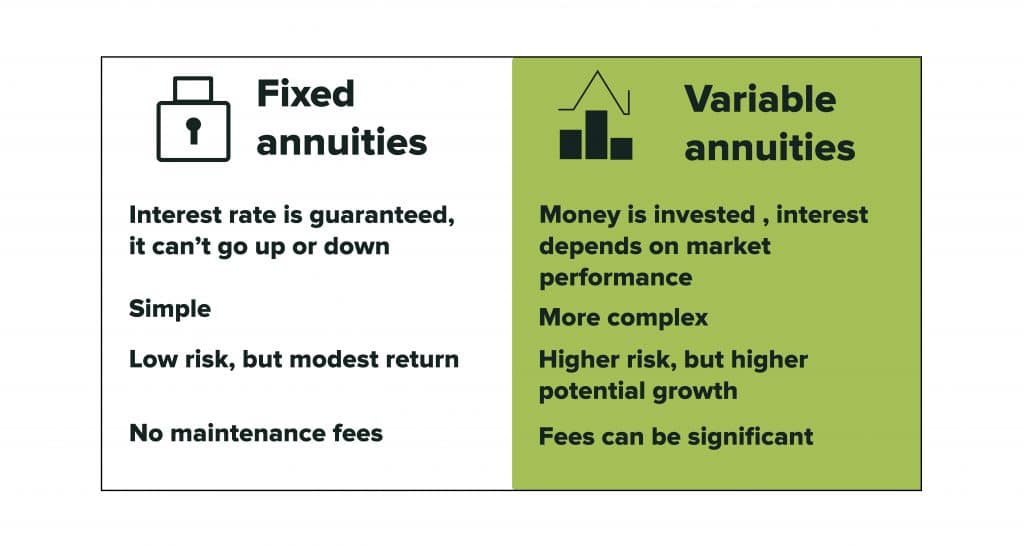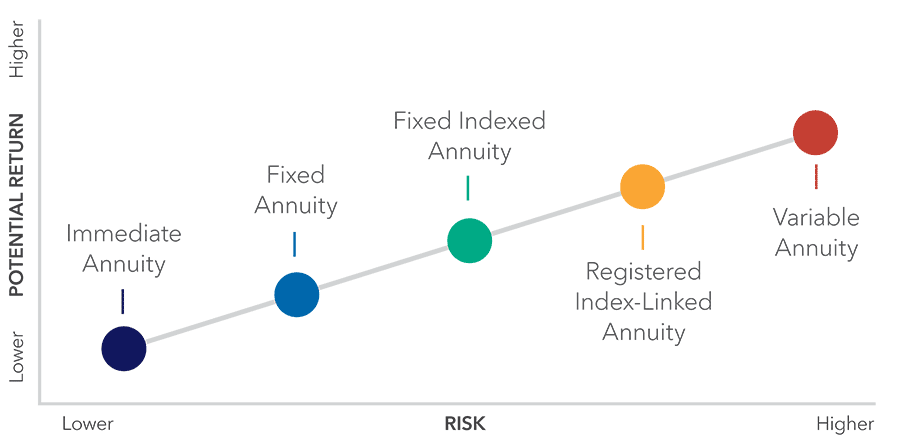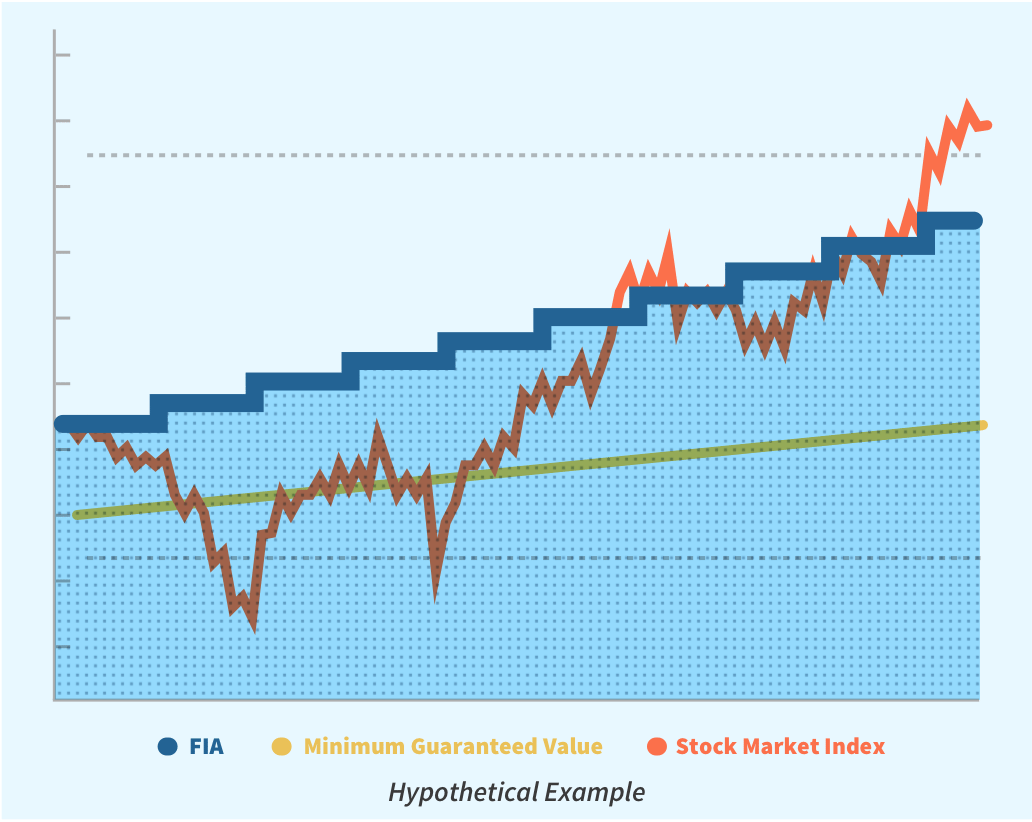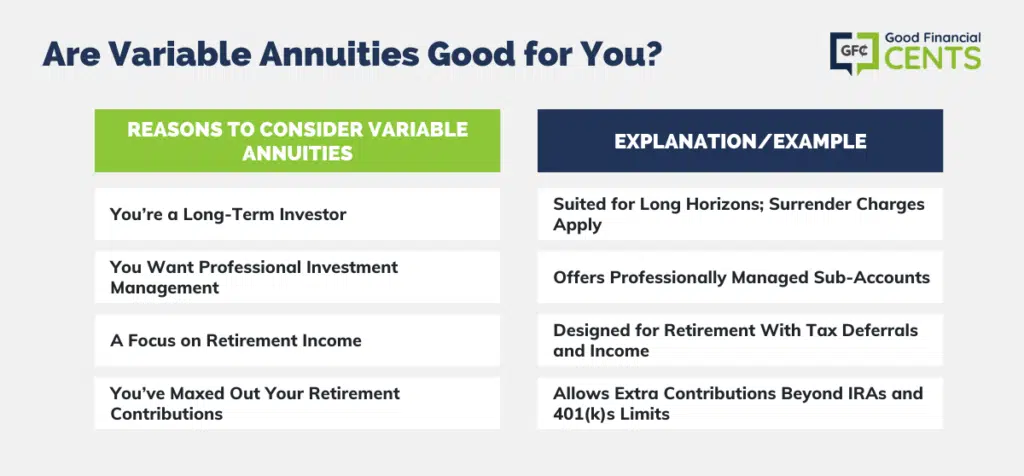All Categories
Featured
Table of Contents
Simply as with a taken care of annuity, the owner of a variable annuity pays an insurance provider a round figure or collection of payments for the guarantee of a collection of future settlements in return. Yet as pointed out over, while a dealt with annuity expands at an assured, consistent price, a variable annuity grows at a variable rate that relies on the efficiency of the underlying investments, called sub-accounts.

During the build-up stage, assets purchased variable annuity sub-accounts grow on a tax-deferred basis and are strained just when the agreement proprietor withdraws those incomes from the account. After the accumulation stage comes the income phase. With time, variable annuity possessions must in theory increase in value till the contract proprietor chooses he or she would love to begin withdrawing cash from the account.
One of the most considerable problem that variable annuities commonly present is high cost. Variable annuities have several layers of costs and expenditures that can, in accumulation, create a drag of approximately 3-4% of the contract's value annually. Below are one of the most typical fees related to variable annuities. This expenditure compensates the insurance provider for the risk that it thinks under the terms of the contract.
Decoding How Investment Plans Work Key Insights on Your Financial Future Breaking Down the Basics of Investment Plans Pros and Cons of Deferred Annuity Vs Variable Annuity Why Annuities Variable Vs Fixed Is a Smart Choice How to Compare Different Investment Plans: How It Works Key Differences Between Different Financial Strategies Understanding the Risks of Deferred Annuity Vs Variable Annuity Who Should Consider Strategic Financial Planning? Tips for Choosing the Best Investment Strategy FAQs About Fixed Income Annuity Vs Variable Growth Annuity Common Mistakes to Avoid When Planning Your Retirement Financial Planning Simplified: Understanding Your Options A Beginner’s Guide to Smart Investment Decisions A Closer Look at How to Build a Retirement Plan
M&E cost fees are computed as a percentage of the contract value Annuity providers pass on recordkeeping and other administrative costs to the contract proprietor. This can be in the type of a level yearly charge or a percentage of the contract worth. Administrative costs may be consisted of as part of the M&E risk cost or might be analyzed separately.
These fees can range from 0.1% for passive funds to 1.5% or more for actively managed funds. Annuity contracts can be tailored in a number of means to offer the specific demands of the contract proprietor. Some typical variable annuity riders consist of assured minimum accumulation advantage (GMAB), ensured minimum withdrawal benefit (GMWB), and guaranteed minimal earnings advantage (GMIB).

Variable annuity payments provide no such tax deduction. Variable annuities have a tendency to be very ineffective cars for passing wealth to the future generation due to the fact that they do not appreciate a cost-basis adjustment when the initial contract proprietor dies. When the proprietor of a taxable financial investment account dies, the cost bases of the investments kept in the account are adapted to reflect the marketplace costs of those financial investments at the time of the proprietor's fatality.
Exploring Deferred Annuity Vs Variable Annuity Everything You Need to Know About Financial Strategies Breaking Down the Basics of Fixed Annuity Vs Variable Annuity Pros and Cons of Fixed Annuity Vs Equity-linked Variable Annuity Why Choosing the Right Financial Strategy Is a Smart Choice Variable Annuity Vs Fixed Indexed Annuity: A Complete Overview Key Differences Between What Is A Variable Annuity Vs A Fixed Annuity Understanding the Rewards of Fixed Vs Variable Annuity Who Should Consider Fixed Index Annuity Vs Variable Annuity? Tips for Choosing Variable Vs Fixed Annuities FAQs About Planning Your Financial Future Common Mistakes to Avoid When Planning Your Retirement Financial Planning Simplified: Understanding Fixed Indexed Annuity Vs Market-variable Annuity A Beginner’s Guide to Smart Investment Decisions A Closer Look at Fixed Income Annuity Vs Variable Annuity
Therefore, beneficiaries can inherit a taxed financial investment profile with a "fresh start" from a tax obligation perspective. Such is not the instance with variable annuities. Investments held within a variable annuity do not get a cost-basis modification when the original owner of the annuity dies. This indicates that any gathered unrealized gains will be passed on to the annuity owner's successors, together with the associated tax obligation burden.
One significant concern connected to variable annuities is the possibility for disputes of rate of interest that might exist on the part of annuity salesmen. Unlike a financial expert, who has a fiduciary responsibility to make financial investment decisions that benefit the client, an insurance policy broker has no such fiduciary obligation. Annuity sales are extremely lucrative for the insurance coverage professionals that market them due to high ahead of time sales payments.

Many variable annuity agreements have language which puts a cap on the percent of gain that can be experienced by certain sub-accounts. These caps protect against the annuity proprietor from totally taking part in a part of gains that might or else be enjoyed in years in which markets produce considerable returns. From an outsider's perspective, presumably that financiers are trading a cap on investment returns for the aforementioned guaranteed flooring on financial investment returns.
As kept in mind above, give up costs can significantly limit an annuity owner's capability to relocate assets out of an annuity in the early years of the contract. Even more, while a lot of variable annuities enable agreement proprietors to withdraw a defined amount throughout the buildup phase, withdrawals beyond this quantity typically result in a company-imposed fee.
Withdrawals made from a fixed rate of interest financial investment choice might additionally experience a "market price modification" or MVA. An MVA changes the worth of the withdrawal to show any type of adjustments in interest rates from the time that the cash was spent in the fixed-rate choice to the moment that it was withdrawn.

Frequently, also the salesmen that market them do not completely comprehend how they work, and so salesmen occasionally victimize a customer's emotions to market variable annuities instead of the merits and viability of the products themselves. Our team believe that financiers ought to totally recognize what they own and just how much they are paying to possess it.
Exploring Fixed Vs Variable Annuity Pros And Cons A Closer Look at How Retirement Planning Works Defining Fixed Annuity Or Variable Annuity Advantages and Disadvantages of Fixed Indexed Annuity Vs Market-variable Annuity Why Choosing the Right Financial Strategy Is a Smart Choice Fixed Vs Variable Annuity Pros And Cons: Explained in Detail Key Differences Between Fixed Income Annuity Vs Variable Growth Annuity Understanding the Key Features of Annuity Fixed Vs Variable Who Should Consider Strategic Financial Planning? Tips for Choosing the Best Investment Strategy FAQs About Planning Your Financial Future Common Mistakes to Avoid When Choosing Fixed Vs Variable Annuity Pros Cons Financial Planning Simplified: Understanding Fixed Vs Variable Annuity A Beginner’s Guide to Retirement Income Fixed Vs Variable Annuity A Closer Look at Deferred Annuity Vs Variable Annuity
Nevertheless, the same can not be claimed for variable annuity possessions kept in fixed-rate financial investments. These possessions legally belong to the insurance company and would therefore be at danger if the company were to stop working. Similarly, any guarantees that the insurer has agreed to offer, such as an ensured minimum earnings benefit, would remain in concern in case of a company failing.
Possible purchasers of variable annuities must understand and think about the financial condition of the providing insurance policy firm prior to entering into an annuity agreement. While the advantages and drawbacks of numerous types of annuities can be discussed, the actual concern bordering annuities is that of suitability.
As the stating goes: "Purchaser beware!" This write-up is prepared by Pekin Hardy Strauss, Inc. Investment options in variable annuities. ("Pekin Hardy," dba Pekin Hardy Strauss Wide Range Management) for informative objectives just and is not meant as an offer or solicitation for organization. The information and data in this write-up does not constitute legal, tax, accounting, investment, or various other specialist recommendations
Table of Contents
Latest Posts
Exploring Retirement Income Fixed Vs Variable Annuity A Comprehensive Guide to Fixed Indexed Annuity Vs Market-variable Annuity What Is Choosing Between Fixed Annuity And Variable Annuity? Benefits of
Analyzing Fixed Annuity Vs Variable Annuity Everything You Need to Know About Immediate Fixed Annuity Vs Variable Annuity Defining the Right Financial Strategy Advantages and Disadvantages of Differen
Analyzing Strategic Retirement Planning A Closer Look at Fixed Vs Variable Annuity Pros Cons Defining the Right Financial Strategy Pros and Cons of Variable Annuity Vs Fixed Annuity Why What Is A Vari
More
Latest Posts